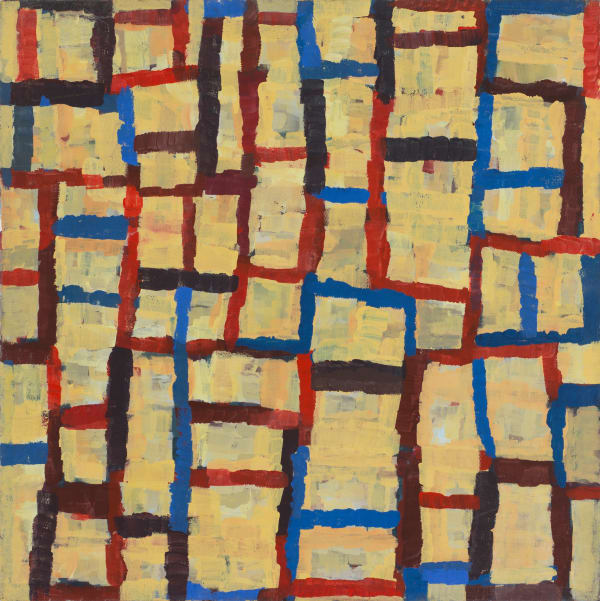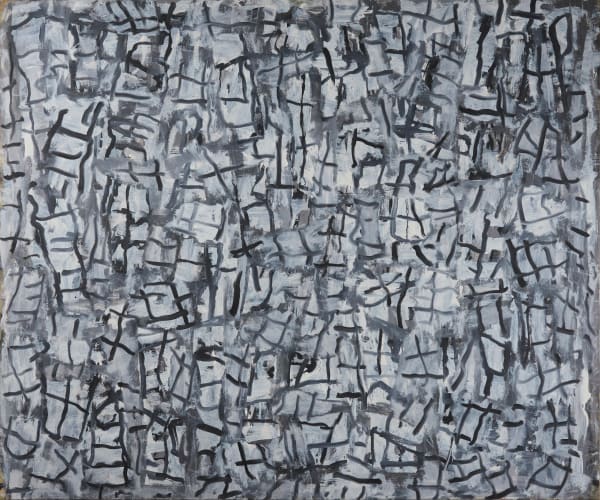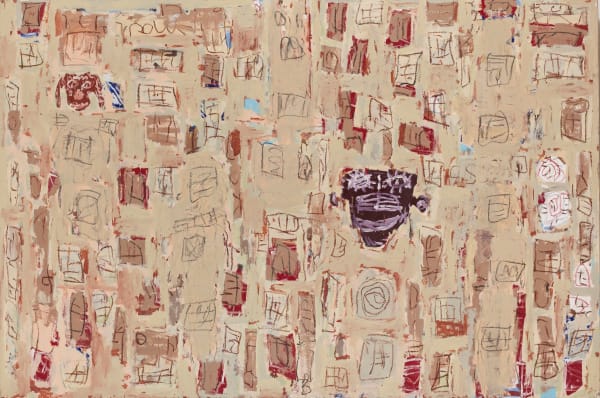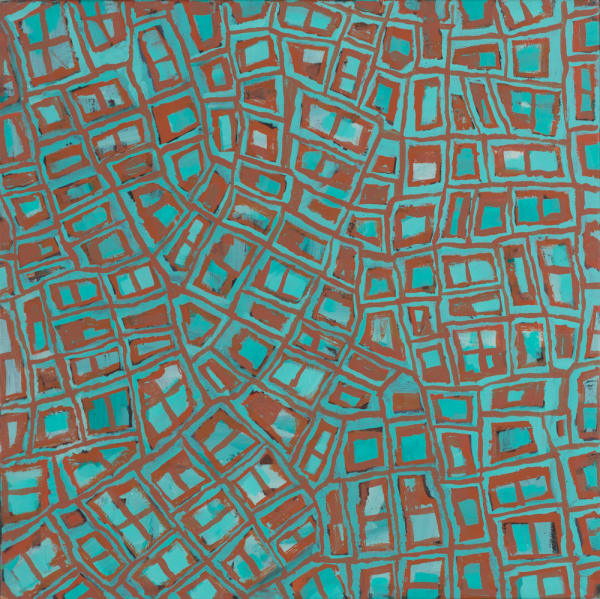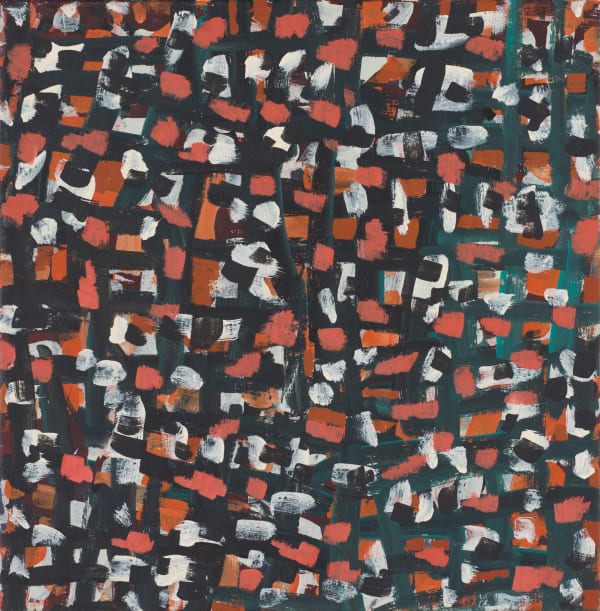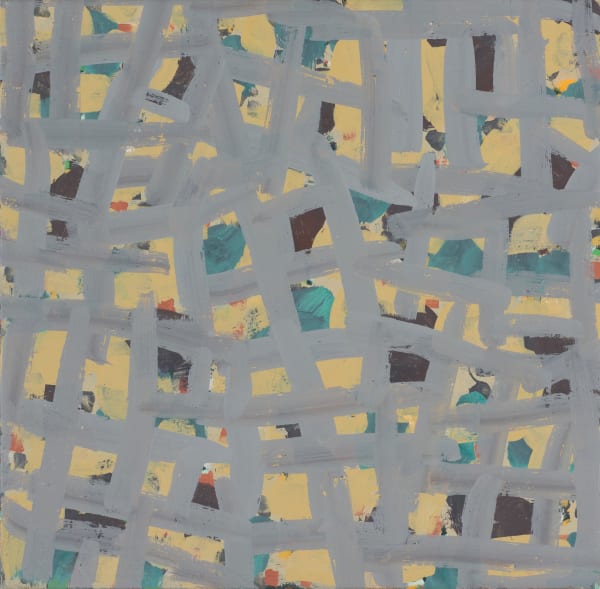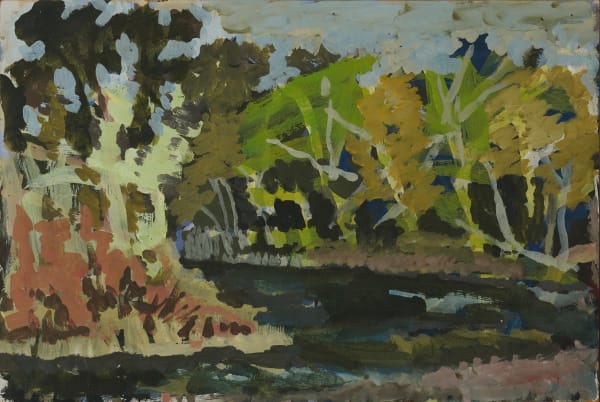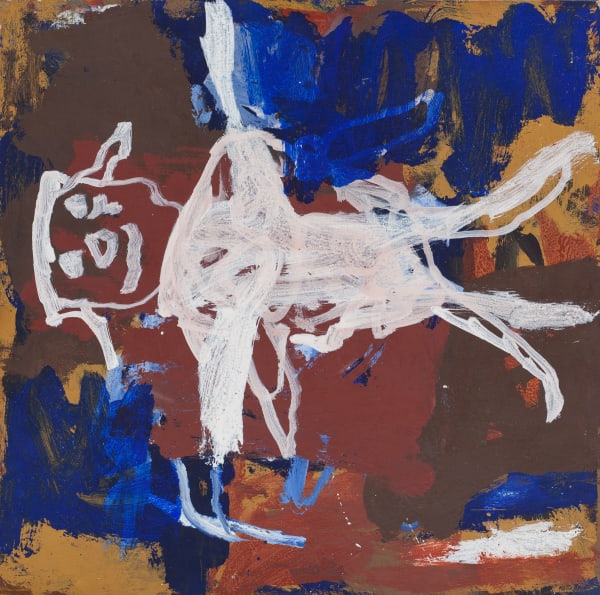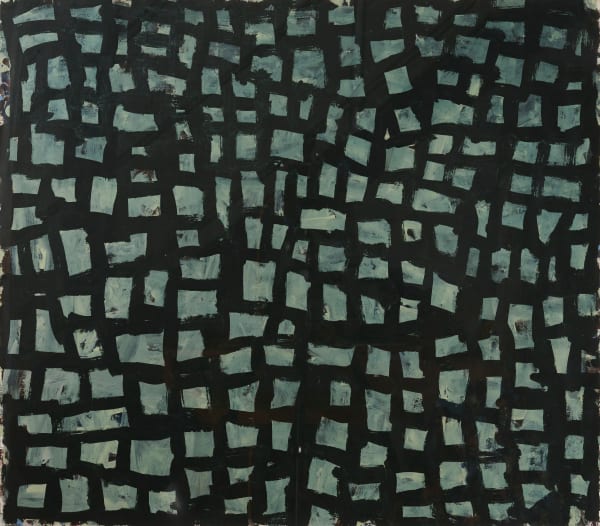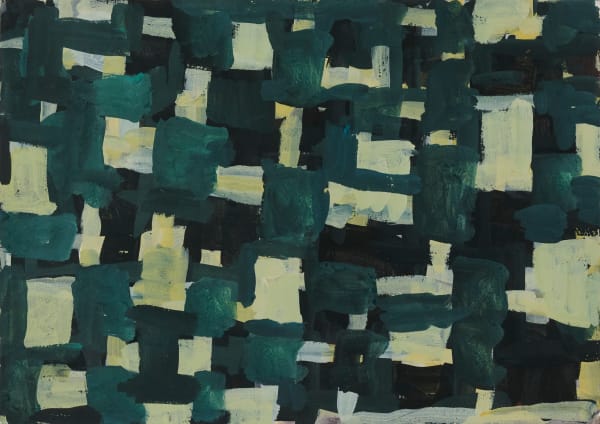Estate of Roy Jackson: The Edge, Pilgrimages to Queensland
“In my case,” Picasso told Christian Zervos, “a picture is a sum of destructions.” Rather than construct a painting in a traditional manner, the artist claimed that his preferred method was to do a picture, then destroy it. Paradoxically, he concluded, “in the end, though, nothing is lost”.
What does this mean? Picasso was notorious for saying mischievous, outrageous things, especially when an interviewer expected him to play the sage or genius. If the artist had destroyed every painting he made from 1935 onwards, there’d be far fewer Picassos on the walls of our museums. The “destructions” he boasts about, signify his willingness to break rules, to defy conventional ideas of beauty or composition. To create at the highest pitch, one must be prepared to sacrifice those things that are superficially pleasing, even if it means starting a fire and sending your audience running for the exits. Out of the furnace, emerge new forms, and a new aesthetic awareness.
Roy Jackson would have endorsed Picasso’s words wholeheartedly. He would occasionally paint with his eyes closed to avoid the self-consciousness that bedevils the trained artist striving to un-learn what he knows too well. He didn’t like to admit he made “pictures”, preferring to think of his works as “processes, objects, things.”
Few artists would be less willing to repeat a particular kind of work because it had proven popular. Jackson did not view art as a profession, it was more like an article of faith. He had a powerful sense of the sacred, and art was his means of entering the temple. He had his sacred mentors, in Dubuffet, Fairweather and Tuckson, and his sacred places, to which he returned again and again. Greece was one of those places, another was Jowalbinna, Percy Tresize’s property on Cape York Peninsula. Jackson loved the landscape, and the Quinkan rock art that was present in great quantities.
The title of this show, The Edge, refers to Jowalbinna, located on the edge of the Australian continent, as Queensland is narrowed down like an Aboriginal spearhead. For Jackson, it’s also the edge between observation and ideation, between figuration and abstraction, as recognisable aspects of landscape are transformed into rhythmic patterns and loose, drifting shapes. The only immediately identifiable landscapes are two 1989 paintings of Thornton Beach, but it requires no more than a one-word title such as Ash (2000), for a grey canvas criss-crossed with broken black lines to be revealed as a burnt field. A mass of blurry, red shapes is called Fire (2000-04), although one might be looking at a group of faces peering out of Dante’s Inferno.
What’s most impressive is the diversity of Jackson’s work from 1988-2004, as he alters his style in response to each different subject or location. The paintings based on his response to the ancient rock art, such as Sideways (1998) or Untitled (Petroglyph) (1988-89), are raw and expressive. Sandy Valley (2001) is a net of free-flowing lines; Black Rock (1999), a stack of squared-off blocks. Other pictures are crude grids, suggestive of flickering shadows and dense vegetation. Each painting seems to ‘destroy’ its predecessor, taking the artist in a new direction. Having surveyed them all, we may finally understand what Picasso meant when he said “in the end, nothing is lost.”
John McDonald essay from the Exhibition Catalogue, 2024
-
 Roy Jackson EstateDiamantina (Water Writing), 2001acrylic on canvas179 x 196 cm, 181.5 x 198.5 cm (framed)
Roy Jackson EstateDiamantina (Water Writing), 2001acrylic on canvas179 x 196 cm, 181.5 x 198.5 cm (framed)
179 x 49 cm (each panel, polyptych) -
 Roy Jackson EstateTableland, 2003acrylic on canvas60 x 60 cm, 62 x 62 cm (framed)Sold
Roy Jackson EstateTableland, 2003acrylic on canvas60 x 60 cm, 62 x 62 cm (framed)Sold -
 Roy Jackson EstateAridlands, 1996acrylic, oil and pastel on canvas160 x 240 cm
Roy Jackson EstateAridlands, 1996acrylic, oil and pastel on canvas160 x 240 cm -
 Roy Jackson EstateAsh, 2000acrylic on canvas152.5 x 183 cm, 154.5 x 185 cm (framed)
Roy Jackson EstateAsh, 2000acrylic on canvas152.5 x 183 cm, 154.5 x 185 cm (framed) -
 Roy Jackson EstateUntitled (Fire), 2009acrylic on canvas82 x 89 cm, 84.5 x 91.5 cm (framed)
Roy Jackson EstateUntitled (Fire), 2009acrylic on canvas82 x 89 cm, 84.5 x 91.5 cm (framed) -
 Roy Jackson EstateSun Over Side Way, 1996acrylic on canvas160 x 240 cm (unframed)
Roy Jackson EstateSun Over Side Way, 1996acrylic on canvas160 x 240 cm (unframed) -
 Roy Jackson EstateSandy Valley, 2001acrylic on canvas178 x 150 cm, 181 x 153 cm (framed)
Roy Jackson EstateSandy Valley, 2001acrylic on canvas178 x 150 cm, 181 x 153 cm (framed) -
 Roy Jackson EstateWalking the River, 1996acrylic, oil, & oil stick on canvas182 x 151 cm, 185 x 154 cm (framed)
Roy Jackson EstateWalking the River, 1996acrylic, oil, & oil stick on canvas182 x 151 cm, 185 x 154 cm (framed) -
 Roy Jackson EstateUntitled (Trails), 1999acrylic on canvas60.5 x 61 cm, 63.5 x 64 cm (framed)
Roy Jackson EstateUntitled (Trails), 1999acrylic on canvas60.5 x 61 cm, 63.5 x 64 cm (framed) -
 Roy Jackson EstateMarlong Plain, 2000acrylic on canvas61 x 61 cm, 63.5 x 63.5 cm (framed)
Roy Jackson EstateMarlong Plain, 2000acrylic on canvas61 x 61 cm, 63.5 x 63.5 cm (framed) -
 Roy Jackson EstateUntitled (Totem), 2004acrylic on canvas180 x 50 cm, 182 x 52 cm (framed)
Roy Jackson EstateUntitled (Totem), 2004acrylic on canvas180 x 50 cm, 182 x 52 cm (framed) -
 Roy Jackson EstateUntitled (Ka Ka Mundi), 2000acrylic on canvas61 x 70 cm, 64 x 73 cm (framed)
Roy Jackson EstateUntitled (Ka Ka Mundi), 2000acrylic on canvas61 x 70 cm, 64 x 73 cm (framed) -
 Roy Jackson EstatePlant Mosaic, 2001acrylic on canvas50 x 50 cm, 51.5 x 51.5 cm (framed)
Roy Jackson EstatePlant Mosaic, 2001acrylic on canvas50 x 50 cm, 51.5 x 51.5 cm (framed) -
 Roy Jackson EstateBlack Rock, 1999acrylic on board41.5 x 45.5 cm, 43.5 x 47.5 cm (framed)
Roy Jackson EstateBlack Rock, 1999acrylic on board41.5 x 45.5 cm, 43.5 x 47.5 cm (framed) -
 Roy Jackson EstateJade Creek, 2001acrylic on canvas47 x 47 cm, 49.5 x 49.5 cm (framed)
Roy Jackson EstateJade Creek, 2001acrylic on canvas47 x 47 cm, 49.5 x 49.5 cm (framed) -
 Roy Jackson EstateTrail, 2001acrylic on canvas50 x 50 cm, 53 x 53 cm (framed)
Roy Jackson EstateTrail, 2001acrylic on canvas50 x 50 cm, 53 x 53 cm (framed) -
 Roy Jackson EstateThornton Beach, 1989acrylic on Masonite42 x 63 cm, 45 x 66 cm (framed)
Roy Jackson EstateThornton Beach, 1989acrylic on Masonite42 x 63 cm, 45 x 66 cm (framed) -
 Roy Jackson EstateThornton Beach Cape Tribulation (Noah Head), 1989acrylic on board43.5 x 82 cm, 45 x 83.5 cm (framed)
Roy Jackson EstateThornton Beach Cape Tribulation (Noah Head), 1989acrylic on board43.5 x 82 cm, 45 x 83.5 cm (framed) -
 Roy Jackson EstateBush Juggler, 1995acrylic on canvas33 x 41 cm, 34 x 42 cm (framed)
Roy Jackson EstateBush Juggler, 1995acrylic on canvas33 x 41 cm, 34 x 42 cm (framed) -
 Roy Jackson EstateSideways, 1998acrylic on board67 x 67 cm x 70 x 70 cm (framed)
Roy Jackson EstateSideways, 1998acrylic on board67 x 67 cm x 70 x 70 cm (framed) -
 Roy Jackson EstateUntitled (Nuga Nuga), 2000acrylic on paper75 x 86 cm, 92 x 103 cm (framed)
Roy Jackson EstateUntitled (Nuga Nuga), 2000acrylic on paper75 x 86 cm, 92 x 103 cm (framed) -
 Roy Jackson EstateUntitled (Petroglyph), 1990acrylic on paper28 x 38 cm, 34.5 x 44.5 cm (framed)
Roy Jackson EstateUntitled (Petroglyph), 1990acrylic on paper28 x 38 cm, 34.5 x 44.5 cm (framed) -
 Roy Jackson EstateUntitled (Angel Creek), 2004acrylic on paper29.5 x 42 cm, 36 x 48.5 cm (framed)
Roy Jackson EstateUntitled (Angel Creek), 2004acrylic on paper29.5 x 42 cm, 36 x 48.5 cm (framed) -
 Roy Jackson EstateUntitled (Erasure), 1990acrylic on paper57 x 76 cm
Roy Jackson EstateUntitled (Erasure), 1990acrylic on paper57 x 76 cm -
 Roy Jackson EstateUntitled (Female Figure), 1994acrylic on paper56 x 76 cm, 68 x 88 cm (framed)
Roy Jackson EstateUntitled (Female Figure), 1994acrylic on paper56 x 76 cm, 68 x 88 cm (framed)

